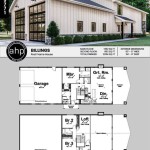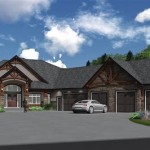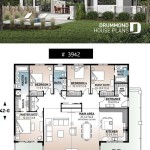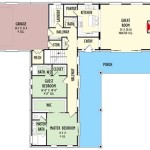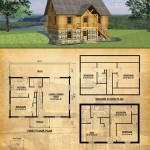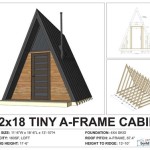Split Level House Plans With Attached Garage: A Comprehensive Overview
Split-level house plans with attached garages represent a popular architectural style, particularly prevalent in mid-20th century suburban developments. These designs offer a unique solution for maximizing space efficiency, managing topography, and providing convenient access to vehicles. This article will delve into the defining characteristics, advantages, common variations, and crucial considerations when selecting a split-level house plan incorporating an attached garage. Understanding these aspects is essential for prospective homeowners evaluating the suitability of this architectural style for their specific needs and preferences.
Defining Characteristics of Split-Level Homes
Split-level homes are characterized by their staggered floor levels, typically with short sets of stairs connecting them. This design distinguishes them from traditional two-story or ranch-style houses. The most common configuration involves three levels: a main level, an upper level, and a lower level. The main level usually contains the living room, dining room, and kitchen. The upper level typically houses bedrooms and bathrooms. The lower level can serve various purposes, including a family room, recreation area, laundry room, or additional storage space. The attached garage is frequently integrated into the lowest level or positioned adjacent to the main entrance of the home.
The staggered levels allow for a separation of living spaces, providing a degree of privacy and functional zoning within the house. This is particularly beneficial for families seeking to delineate between active living areas and more private zones like bedrooms. Furthermore, the split-level design can be advantageous on sloping lots, as it allows the house to conform to the natural topography, minimizing the need for extensive excavation and site grading. The attached garage further enhances the practicality of the design by providing direct access to the house, especially beneficial during inclement weather.
The architectural style of split-level homes can vary considerably. Some designs feature more contemporary elements, while others lean towards a more traditional aesthetic. Common exterior features include large windows, horizontal siding, and low-pitched roofs. The integration of the attached garage is often seamless, with the garage door blending into the overall design of the facade. The interior layout can also be customized to suit the specific needs of the homeowner, with options for open-plan living areas or more defined and separate spaces.
Advantages of Split-Level House Plans with Attached Garages
Split-level house plans with attached garages offer several distinct advantages. The separation of living spaces is a key benefit, allowing for a more private and organized living environment. The staggered levels provide a natural buffer between the main living areas and the bedrooms, reducing noise transmission and creating a more peaceful atmosphere in the sleeping quarters. This is particularly advantageous for families with young children or individuals who work from home.
The attached garage provides convenient and secure parking, as well as direct access to the house. This is especially appreciated during cold or rainy weather, as it eliminates the need to walk outdoors to reach the car. The attached garage can also serve as additional storage space for tools, equipment, and other items that are not frequently used. Many attached garages also include space for a workbench or other hobby-related activities.
Split-level homes often offer a good value proposition, particularly in areas where land costs are high. The design allows for a more efficient use of space compared to single-story ranch homes, while typically being less expensive to build than two-story houses. The split-level configuration also lends itself well to energy efficiency, as the staggered levels can help to regulate temperature and reduce heating and cooling costs. The attached garage can further contribute to energy efficiency by acting as a buffer zone between the house and the outside environment.
The adaptability of split-level designs to sloping lots is another significant advantage. This allows homeowners to build on properties that might be unsuitable for other types of houses, maximizing the potential of the land. The split-level configuration can also create interesting architectural features, such as walk-out basements and terraced landscaping.
Common Variations and Design Considerations
Several variations of the split-level house plan exist, each with its own unique characteristics. The most common variations include the side-split, the back-split, and the front-split. In a side-split design, the levels are staggered to the side of the house, with the entrance typically located on the main level. In a back-split design, the levels are staggered to the rear of the house, often featuring a walk-out basement. In a front-split design, the levels are staggered to the front of the house, with the garage often integrated into the lowest level.
When selecting a split-level house plan with an attached garage, several design considerations should be taken into account. The size and layout of the garage should be carefully considered, taking into account the number of vehicles to be accommodated, as well as any additional storage needs. The placement of the garage in relation to the house is also important, as it can affect the overall curb appeal and functionality of the design. The orientation of the house on the lot should be optimized to maximize sunlight exposure and minimize energy consumption.
The interior layout of the house should be carefully planned to ensure a comfortable and functional living environment. The flow between the different levels should be seamless and intuitive, with adequate lighting and ventilation. The location of the bedrooms and bathrooms should be carefully considered to ensure privacy and convenience. The kitchen should be designed to be efficient and functional, with ample counter space and storage. The living room should be spacious and inviting, with plenty of natural light.
The exterior design of the house should be aesthetically pleasing and in harmony with the surrounding environment. The materials used for the exterior should be durable and low-maintenance. The landscaping should be carefully planned to enhance the curb appeal of the house and provide a pleasant outdoor living space. The integration of the attached garage into the overall design should be seamless, with the garage door blending into the facade.
Accessibility is another crucial factor. The short flights of stairs inherent in split-level designs can present challenges for individuals with mobility issues. Ramps or lifts would need to be incorporated to ensure accessibility for all residents and visitors. For aging in place, split-level homes often require modifications to accommodate future needs.
Key Considerations for Selecting a Split-Level House Plan
Selecting the right split-level house plan with an attached garage requires careful consideration of several factors. The homeowner's lifestyle and needs should be the primary consideration. The number of bedrooms and bathrooms needed should be determined, as well as the desired size and layout of the living areas. The amount of storage space required should also be taken into account. The homeowner's budget should be realistically assessed, taking into account the cost of construction, materials, and labor.
The site conditions should also be carefully evaluated. The topography of the lot, the soil conditions, and the climate should all be taken into account. The orientation of the house on the lot should be optimized to maximize sunlight exposure and minimize energy consumption. The local building codes and regulations should be carefully researched to ensure compliance. It is important to work with a qualified architect or builder who has experience with split-level construction.
Future resale value should be considered when selecting a split-level house plan. While split-level homes can offer good value, their popularity can vary depending on location and market trends. Choosing a design that is adaptable and appealing to a broad range of potential buyers can help to ensure a good return on investment. Attention to detail in the design and construction can also enhance the resale value of the house.
Finally, it is crucial to prioritize quality materials and workmanship. Investing in durable and low-maintenance materials can save money in the long run by reducing the need for repairs and replacements. Hiring experienced and qualified contractors can ensure that the house is built to a high standard of quality. A well-built split-level home with an attached garage can provide a comfortable, functional, and valuable living space for many years to come.

Modern Split Level House Plans And Floor With Garage

Modern Split Level House Plans And Floor With Garage

House Plan 2 Bedrooms 1 Bathrooms Garage 3288 V1 Drummond Plans

Modern Split Level House Plans And Floor With Garage

4 Bedroom Split Level House Plan 2136 Sq Ft 2 Bathroom

Split Level House Plans And Foyer Floor


Split Garage Ranch Home Plan 89266ah Architectural Designs House Plans

Split Entry House Plans Page 1 At Westhome Planners

Split Level Modern Farmhouse House Plan Creighton Exterior Plans Remodel

